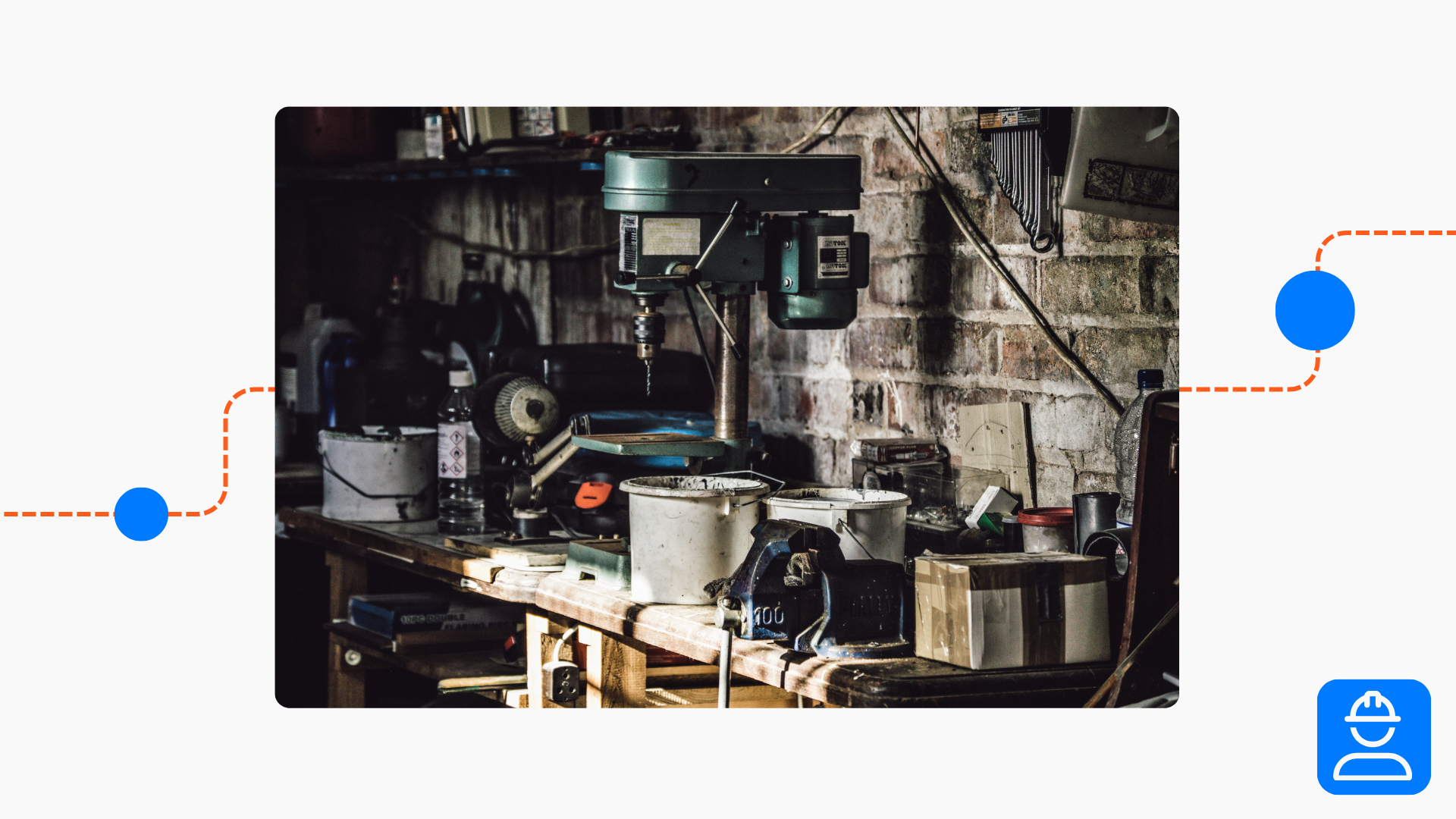Working as an EHS professional has taught me the dangers of clutter in the workplace. Not only does clutter lower productivity and increase safety hazards, but it can also negatively affect employee morale.
If you work in the safety field, it’s your responsibility to advocate for the health of your workers. If your facility struggles with cleanliness, it’s in the best interest of your EHS program to tackle these problems and create lasting changes.
Workplace clutter creates safety hazards
The biggest impact of clutter in the workplace is on health and safety. When a work area has a lot of clutter, there can be many dangers hidden within that clutter. If you unknowingly have combustibles laying around, mixed with a lack of basic housekeeping, you run a huge fire risk.
Remember: fire hazards don’t only come from open flames. You must also think about electrical systems, vapors, etc., which pose a threat as well. Not to mention, there are several companies who don’t maintain their electrical systems appropriately.
Other than the obvious fire danger, think about the issue of slips, trips, and falls. According to the National Safety Council, same-level fall incidents accounted for 136 worker deaths and 127,680 injuries in 2020. Piles of clutter and loose items can increase the probability of these incidents.
And, of course, clutter has an undeniable impact on worker health if it:
- Creates dust hazards
- Reduces cleanliness in spaces where workers eat (usually break rooms)
- Increases likelihood of pest problems
Clutter’s impact on worker morale
Another negative effect of clutter in the workplace is on the morale among employees. Because who really wants to work or take breaks in a messy, untidy space? No one. Not even the people whose homes are cluttered.
In my experience, managers tend to underestimate the impact that a clean workspace can have on worker engagement. Because when the area is clean, workers feel taken care of. They feel more motivated to get to work, but they also feel more motivated to keep the space clean for others.
Having clutter around communicates to workers that their experience isn’t a priority to you. And it can lead to lower engagement and higher turnover in the long run.
Workers are less productive around clutter
Okay, so we know clutter is very unsafe and gross, but is it unproductive? Studies show that it is. A 2020 study in the North American Journal of Psychology found that workplace “clutter impact did predict emotional exhaustion and stress.”
If you have ever watched someone work in a cluttered environment (home or work), then you know how difficult it is to do it. Here are some of the top reasons why clutter lowers productivity:
- Workers take longer to find the tools and resources they need to perform tasks.
- Departments have to repurchase lost or broken items.
- If clutter obstructs walkways, it takes workers longer to move from point A to point B.
If you could cut down on the amount of time it takes for workers to get started on their tasks, you could significantly increase productivity. Plus, eliminating clutter means you’ll probably save a lot of money that you otherwise would have spent on replacing supplies, purchasing organization materials, and more.
My best advice would be to start by decluttering what you have onsite. Do it one area at a time so that you make sure everything in that workspace is supposed to be there. Then, audit the area a few weeks later and make note of whether the clutter has returned. If so, you’ll need to implement some control measures to make sure it doesn’t come back.

Jason Hathcoat
Jason is a seasoned EHS professional with more than 17 years of experience working in health and safety. He currently works as an EHS manager for a large global HVAC company.
Other posts you might like…
No posts

